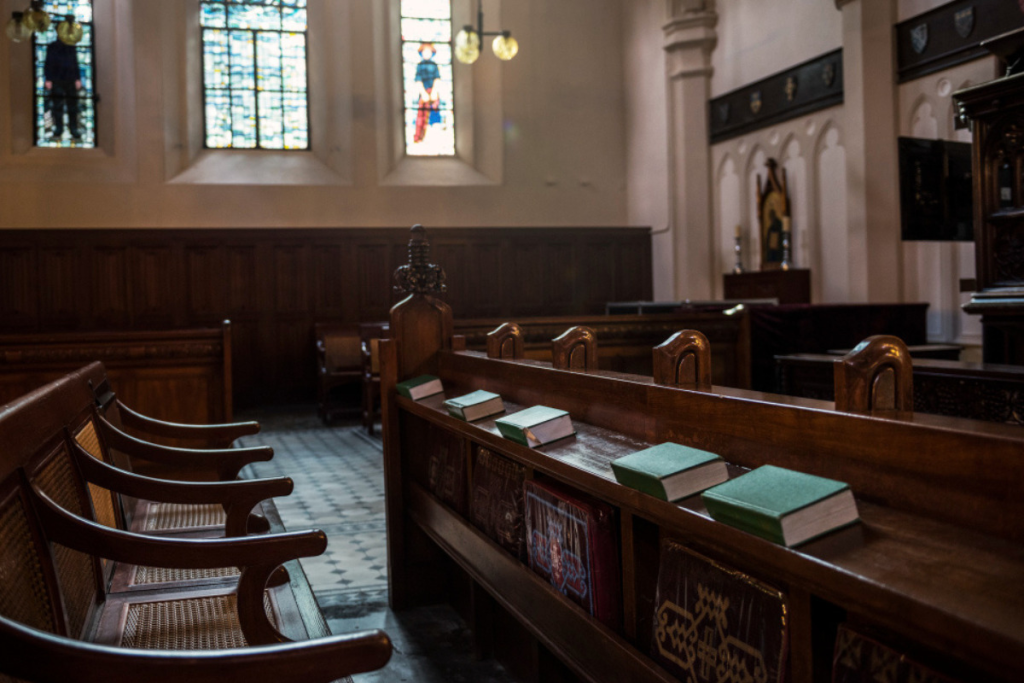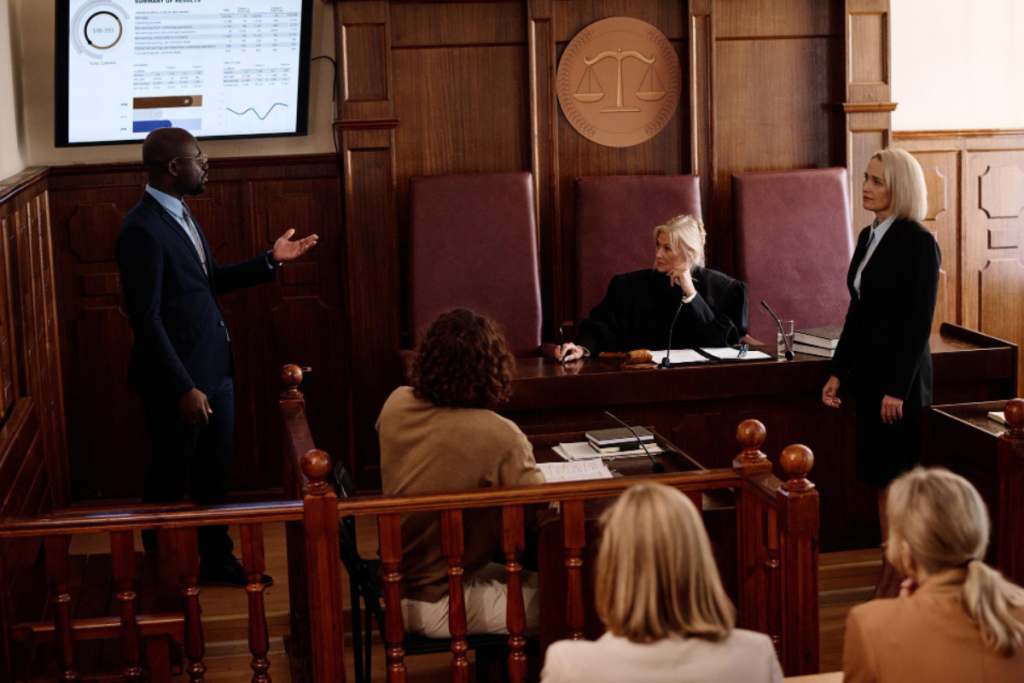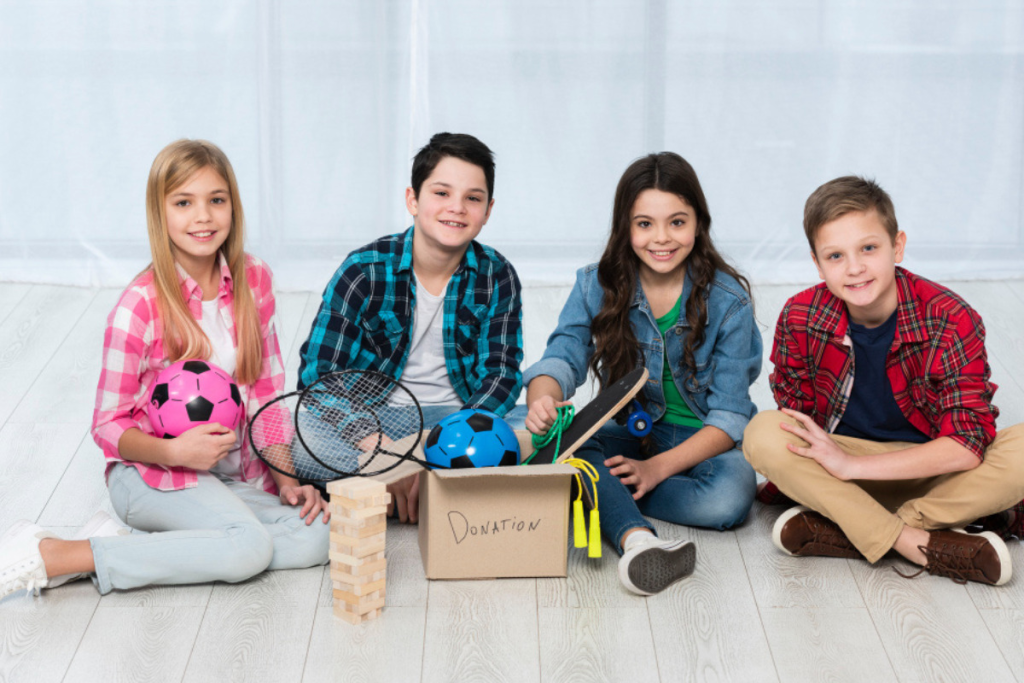Last Updated on November 12, 2025 by Bilal Hasdemir
The idea of a minimum age for criminal responsibility is key in the juvenile justice system. It brings up questions about when a child can be seen as criminally liable.
Different places have different laws on this, making it complex. Some countries can prosecute kids as young as six. Others have higher age limits.

In the U.S., the situation is also varied. By 2022, 24 states didn’t have a set age for criminal responsibility. This shows the need for a more consistent rule. What is the youngest age a child can be prosecuted? Learn about the serious legal cutoffs for juvenile age and a child’s critical right to due process.
It’s key to know when a child can be seen as criminally responsible. This age is important because it shows when a child can face legal trouble for their actions.
The minimum age of criminal responsibility (MACR) is when kids are seen as not able to commit crimes. Laws about MACR vary a lot, showing different views on kids and justice. The idea of doli incapax is a big part of this, saying kids under a certain age can’t really mean to do wrong.
Laws set the minimum age for kids to be tried as criminals. These laws try to balance holding kids accountable with understanding they’re not fully grown.
How we view kids and crime has changed a lot over time. In the past, kids were treated like adults in court, without thinking about their age. But as we learned more about how kids grow, laws changed to help them.
The start of juvenile justice systems was a big step. It recognized that kids need special help because of their age and stage of development. The idea of doli incapax was key in this change, making sure young kids weren’t treated the same as adults.
Today, there’s a lot of talk about the right minimum age and how to use it. These talks show our society’s worries about fairness, protecting kids, and finding the best ways to deal with young offenders.
Knowing the juvenile’s age is key to figuring out if the young defendants are truly guilty. The law sees that kids and teens might not get things like adults do. This affects how well they understand their actions and the outcomes.
The age of a defendant is very important in deciding guilt. Studies show that kids under 14 often don’t get the judicial process. This makes it hard for them to be tried and held accountable for their actions.
Legal culpability is about how much blame someone gets for a crime. For kids, it depends on their age, maturity, and understanding of their actions. The idea behind this is doli incapax, which says kids under a certain age can’t really mean to do wrong.

The doli incapax principle is a legal rule. It says kids can’t be guilty because they can’t really mean to do wrong. This idea is important in dealing with kids in court because it recognizes they’re not fully grown.
How doli incapax is used can change from place to place. Different areas have different ages when kids are seen as able to understand and mean to do wrong. This shows there’s a big debate about when kids should be seen as responsible for their actions.
It’s important to understand how age, guilt, and doli incapax work together. This helps make sure young defendants are treated fairly in court.
The age at which a child can be held criminally responsible varies worldwide. This shows different views on juvenile justice across cultures and laws.

Even with differences, there are shared global standards for setting the minimum age for criminal responsibility. The United Nations Convention on the Rights of the Child suggests that states should have a minimum age. This age is below which children are not seen as capable of breaking the law.
Key international standards include:
These guidelines stress the need to look at a child’s age, maturity, and understanding of their actions.
Some countries have set high minimum ages for criminal responsibility. This shows a focus on protecting children in their justice system.
Examples include:
On the other hand, some countries have very low minimum ages. This indicates a stricter view on juvenile offenders.
Notable examples include:
Worldwide, 14 is the most common age for criminal responsibility. This matches the advice from international human rights bodies.
The variety in minimum ages worldwide shows the challenge of balancing justice and child welfare. It highlights the need for a thoughtful approach to handling juvenile justice.
Looking at the minimum age for criminal responsibility in U.S. states shows the tough balance between justice and growth. Each state has its own way of handling this issue, making it complex.
By 2022, 24 U.S. states didn’t have a set minimum age for criminal responsibility. This doesn’t mean kids are always seen as criminals. Instead, judges use their own judgment or old laws.
In some places, the idea of doli incapax is used. It says kids under a certain age can’t really mean to do wrong. But the age when this rule kicks in can change, confusing.
On the other hand, some states have set clear ages for when kids can be seen as criminals. These ages range from 6 to 10 in some areas, to 14 or more in others.
Lately, many states have decided to raise the age at which kids can be seen as criminals. This change comes from understanding that kids need time to grow before facing adult justice.
For example, some states have raised their age limits. This shows a growing belief that younger kids can’t fully understand the law.
Studies show that kids’ brains keep growing until their early twenties. This affects how they make decisions and understand legal stuff.
Adolescents often make quick decisions and don’t fully get the big picture. This supports the idea of raising the age for criminal responsibility.

The growth of the adolescent brain is key in deciding when they can be held responsible. Research shows that the part of the brain for making decisions and controlling impulses keeps growing into young adulthood.
This knowledge is important for lawmakers as they figure out the right age for criminal responsibility. They need to balance justice with the fact that kids are not fully grown.
By looking at the minimum age for criminal responsibility in U.S. states and the latest science, we can see the need for a careful approach. This approach should consider how kids and teens develop emotionally and cognitively.
Ensuring due process for young defendants is a complex issue in the U.S. justice system. When children are tried in adult courts, their due process rights are tested. This raises concerns about their ability to understand and participate in legal proceedings.
The concept of competency to stand trial is key. It ensures defendants, including young ones, can grasp legal proceedings and help in their defense. Research shows that children under 14 often can’t fully understand these proceedings, risking their due process rights.
A study on juvenile competency found that adolescents struggle with legal concepts and making informed decisions. This highlights the unfairness of trying young defendants in adult courts.
Young defendants often find legal proceedings complex. This can lead to them not being able to effectively defend themselves, potentially causing unjust outcomes.
The right to effective counsel is a core part of due process. For young defendants, having a skilled attorney who understands their unique needs is vital.
In conclusion, ensuring due process for young defendants requires a detailed approach. It must address competency to stand trial, understanding legal proceedings, and the right to effective counsel. By focusing on these areas, the justice system can better safeguard the rights of young defendants and achieve fairer outcomes.
The infancy defense is a key legal idea. It says kids can’t form the intent needed for criminal charges. This idea helps protect young people in the justice system.
The infancy defense comes from old laws. It was believed that young kids couldn’t understand criminal intent. This idea helped tell the difference between bad acts and just being young.
Application in Historical Context: How this defense was used changed over time. It depended on the child’s age and the crime. Understanding the historical context helps us see how this defense has grown.

Today, the infancy defense is key in dealing with young offenders. It says kids are not fully responsible for their actions because they’re not mature enough.
Using the infancy defense now involves looking at the child’s age, development, and the crime details. Courts often need expert opinions to decide if a child can understand criminal intent.
Many cases have shown the importance of the infancy defense. For example, when very young kids are accused of serious crimes, it makes us question whether they can understand intent.
Examples of Notable Cases:
These cases show the complexity of using the infancy defense. They highlight the need to understand child development and criminal law well.
When kids are under the minimum age, we focus on helping them, not punishing them. We know they can’t be held to the same standards as adults.
For young kids, we use special help to fix their behavior problems. This might include counseling, family therapy, and community-based programs. Our goal is to support them in growing up right.
We work with many people to help these kids. Social workers, teachers, and mental health experts all play a part. Together, we create a strong support system for them.
If young kids act out, the child welfare system might step in. This system is all about keeping kids safe and happy. They offer things like foster care, counseling, and family support.
Their main job is to make sure the child is safe. They try to find and fix the reasons behind the child’s behavior. This helps prevent more problems and gives the child a stable place to grow.
Family court is another way to help young kids. It focuses on the child’s and family’s well-being, not punishment.
Family court can order things like parenting classes, family therapy, and supervision by social services. They aim to create a supportive environment. This helps the child grow up positively and solves family issues.
By using special help, involving the child welfare system, and going to family court, we can really help young kids. These methods focus on their well-being and growth. They offer a more caring way to deal with their behavior.
Landmark cases have greatly shaped how we treat young offenders. They have set important rules for the justice system’s handling of juveniles.
The Supreme Court has made key decisions in juvenile justice. One major case is Miller v. Alabama. It said mandatory life sentences for juveniles are not okay. This shows we need to think about each case individually, considering the youth’s age and situation.
Another big case is Roper v. Simmons. It banned the death penalty for kids. The Court said kids are different from adults because they are growing and can change.
State courts have also played a big role in juvenile justice. For example, some states now let kids be tried as adults only when they are older. This shows we’re learning more about how kids develop.
State decisions often fit the local needs better. They help shape how we deal with young offenders. These rules can also help shape national policies on juvenile justice.
Looking at both federal and state cases, we see how laws for juveniles keep changing. These decisions remind us of the need to understand and meet the special needs of young offenders.
Top medical and academic groups have made key suggestions about the minimum age for criminal responsibility. They use the latest studies on child growth and psychology.
The American Academy of Pediatrics strongly supports a minimum age for criminal responsibility. They say it should be at least 12 years old. Many members think 14 might be better.
This advice comes from deep research on how the brain grows in teens. It shows that kids’ thinking and feelings keep getting better until they’re much older.
The American Psychological Association also has guidelines. They stress the need to think about a child’s stage of development when deciding if they can be held criminally responsible.
Their studies show that teens don’t have the same thinking skills as adults. This supports setting a higher minimum age.
The United Nations has set standards and guidelines. They suggest that countries should follow international human rights law when setting the minimum age for criminal responsibility.
These guidelines recommend a minimum age that fits with children’s needs and rights. They push for helping young offenders to change, not just punishing them.
Key Recommendations:
These suggestions from top medical and academic groups highlight the need for a careful approach to justice for the young. It’s important to balance holding them accountable with understanding their ongoing development.
The juvenile justice system must find a balance between justice and child welfare. This is key to helping young offenders grow and develop. They are not yet fully formed physically, emotionally, or cognitively.
The debate between rehabilitation and punishment is ongoing. Punishment aims to stop future crimes, while rehabilitation helps young people overcome their challenges. Studies show that rehabilitation is better at reducing crime rates among juveniles.
Key components of rehabilitation include:
Rehabilitation programs help reduce the chance of reoffending. This makes communities safer and supports the child’s welfare.
Restorative justice models offer an alternative. They focus on fixing the harm caused by the crime. This involves the victim, the offender, and the community working together to find a solution.
Restorative justice practices include:
These practices help young people understand their actions. They take responsibility, leading to healing and reparation.
Community-based interventions are vital for supporting juveniles and their families. These can include:
By tackling the root causes of delinquent behavior, these interventions can prevent further involvement in the justice system.
In conclusion, finding a balance in the juvenile justice system is complex. It requires a mix of rehabilitation, restorative justice, and community-based interventions. By focusing on the unique needs of young offenders, the system can achieve justice while supporting their development.
The debate over the minimum age to stand trial is ongoing in the U.S. Supreme Court. Cases like Roper v. Simmons (2005) and Miller v. Alabama (2012) have shaped juvenile justice. They highlight the need to consider age in sentencing and ban executions for those under 18.
Many now suggest setting the minimum age for criminal responsibility at 14. This change is backed by studies on brain development and the idea of doli incapax. It questions whether children can fully understand their actions. For more details, check out the Office of Juvenile Justice and Delinquency website.
As we move forward, finding the right balance between justice and child welfare is key. Models like rehabilitation and restorative justice are becoming more popular. They aim to help young offenders fit back into society. The future of juvenile justice will likely see more reforms to protect children while keeping communities safe.
The minimum age of criminal responsibility (MACR) is when a child can be held criminally liable. It’s a key part of the juvenile justice system.
Doli incapax is a legal rule. It says children are too young to have criminal intent because of their age and development.
When a child can be tried as an adult changes by place. Some places have laws that let juveniles be tried in adult court.
The infancy defense is a legal idea. It says children are too young to have criminal intent. It’s used in cases involving kids.
Usually, a 12-year-old can’t be sent to jail like an adult. But, they might go to juvenile detention or get other help instead.
The age range for juveniles changes by place. But, it’s often between 7 and 17 years old. Some places have different ages.
Kids under the minimum age might face other consequences. They could get help from the child welfare system or the family court.
Being able to stand trial is very important for kids. They need to understand the legal process and help defend themselves.
Groups like the American Academy of Pediatrics and the American Psychological Association have made recommendations. They suggest a minimum age based on what we know about development.
The juvenile justice system tries to balance justice and helping kids. It uses methods like rehabilitation and community-based programs.
Important cases, like Supreme Court decisions, have shaped how we treat young offenders. They’ve helped set policies for juvenile justice.
Whether a kid in adolescence is guilty is a complex question. It depends on their age and ability to understand criminal intent.
The age for imprisonment changes by place. Some places have laws about when kids can be detained.
The minimum age for juvenile detention also changes by place. Some places have laws about when kids can be detained.
The age to go to jail varies by place. Some places have laws about when kids and adults can be detained.
Subscribe to our e-newsletter to stay informed about the latest innovations in the world of health and exclusive offers!
WhatsApp us